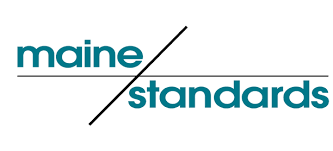Calibration verification is a critical laboratory management practice, and it’s required by the Clinical Laboratory Improvement Amendments of 1988, known as CLIA ’88. This worthwhile process ensures your instruments and methods are producing accurate and reliable test results. And, it has other key benefits. Calibration verification can serve as an early warning signal by identifying issues before they require considerable resources to further analyze or correct, thereby allowing lab directors to be proactive versus reactive.
Equally important, calibration verification has a positive impact on proficiency testing (PT). Researchers looked at this connection as early as 1995. More recently, Martin Kroll MD, Patricia Styer PhD, and Delmire Vasquez, MT(ASCP), studied participants in the College of American Pathologists (CAP) select general chemistry linearity (LN) surveys. CAP offers materials for calibration verification with linearity surveys.
The research team evaluated whether successful calibration verification equals improved proficiency testing results. They found it did. According to the study: “laboratories enrolled in the corresponding LN surveys demonstrated superior PT performance, as measured by the presence of unacceptable results among all challenges, compared with laboratories not enrolled in the corresponding LN surveys.” The author’s noted that labs investigating PT results showing increased variability, which consumes resources and can be “a source of concern;” so, being able to reduce variability “would be helpful.”
Why Proficiency Testing?
PT validates a laboratories' entire testing process as well as the competency of testing personnel. Unknown samples are provided on a scheduled basis by an HHS-approved program, such as CAP or the American Proficiency Institute (API). The laboratory then reports their results for grading, and they’re provided scores (based on CLIA grading criteria).
Regularly reviewing PT reports gives laboratory directors and staff directors an opportunity to focus on areas that are not performing as expected and to identify trends that may eventually affect patient results. Any results showing patients who were or may have been affected must be addressed. A laboratory failing to secure satisfactory scores for an analyte, subspecialty or specialty (after two consecutive testing events) is considered unsuccessful in terms of PT performance. Such a classification can lead to the lab’s discontinuation of the failed test.
Why Calibration Verification?
Calibration verification is the analysis of materials of a known concentration against patient samples to confirm an instrument or test system’s calibration. This assessment is required every six months and also when there is a complete change in the set of reagents to a new lot, there is major preventative maintenance, or replacement of critical parts of the instrument, quality control data shows a trend, shift, or is outside of acceptable limits and when recommended by the manufacturer. Check out our recent blog article titled CLIA Standards & CAP Accreditation: What's the difference?
Within calibration verification, LN surveys offered by CAP span most reportable ranges and exceed the ranges found for proficiency testing. The LN surveys establish whether instruments and methods within the lab are properly calibrated against a peer group.
Making the Connection
Using four PT performance variables, the Kroll, Styer and Vasquez study found that laboratories enrolled in LN surveys showed superior PT performance when compared with laboratories not enrolled in the same surveys. There was an even higher correlation to proficiency test success and a lower number of unacceptable results and reduced variability against the peer group mean.
The study’s authors suggest there are several reasons why successful LN surveys may translate into fewer PT unacceptable results and reduced variability. For example, non-failure warnings, or failing to validate a measurement range, can identify problems that can be corrected before undertaking PT.
The time and resources linked to PT are part of your laboratory’s overhead costs, so it’s important to reduce these costs, when possible. Calibration verification, as part of a thoughtful PT plan, will allow you to cost-effectively meet quality and accreditation standards and verify measurement processes.
Find out how calibration verification can assist you with superior PT performance by downloading our white paper titled How to Pass Proficiency Testing With Calibration Verification by clicking on the button below.
Questions?
Talk to an LGC Maine Standards specialist about how calibration verification can improve your laboratory’s proficiency testing. Email CDx-CustomerService@lgcgroup.com, or call all 1-800-377-9684.
Karen Griffin MT(ASCP) is a Technical Product Manager at LGC Clinical Diagnostics.








